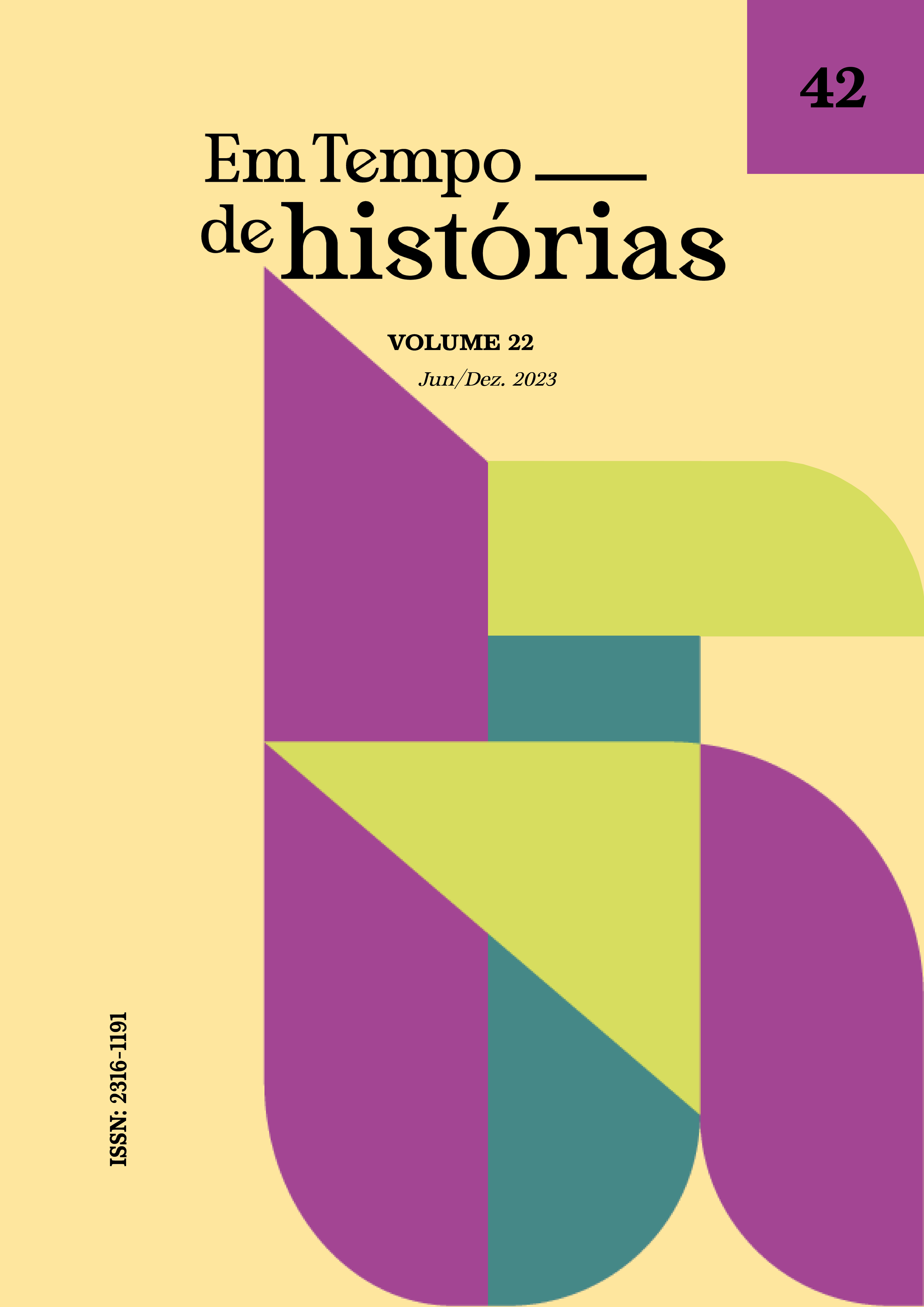The diffusion of teh legendary figure of Alexander the Great through The Greek Alexander Romance and its relation to the Folktale
DOI:
https://doi.org/10.26512/emtempos.v22i42.48539Keywords:
The Alexander Romance, Folktale, Alexander the GreatAbstract
The present article aims to discuss the legendary figure of Alexander the Great through The Greek Alexander Romance, and how the likeness relationship of the book with some models of the so-called folktale shaped a primary vector of the Macedonian conquer idea, as a legendary hero, within society. The structural classification presented by Vladimir Propp's Morphology of the Folktale (1969) is therefore used for such comparison. The text also discusses how each time period, from ancient times until contemporaneity, described its own Alexander by different text traditions and by their authors’ temporal vicissitudes.
Downloads
References
ARRIANO. Alexander the Great: The Anabasis and the Indica. Translated by Martin Hammond. Oxford: Oxford University Press, 2013.
BADIAN, Ernest. Collected Papers on Alexander the Great. New York: Routledge, 2012.
BORZA Eugene. N. Introdução. In: BADIAN, Ernest. Collected Papers on Alexander the Great. New York: Routledge, 2012. p. 13-19.
BOSWORTH, A.B; BAYNHAM, E.J. Alexander the Great in Fact and Fiction. New York: Oxford University Press, 2000.
BURKE, Peter. Cultura Popular na Idade Moderna. São Paulo: Companhia das Letras, 2010.
DIODORO DA SICÍLIA. Library of History, Volume VIII: Books 16.66-17. Translated by C. Bradford Welles. Loeb Classical Library 422. Cambridge, MA: Harvard University Press, 1963.
DROYSEN, Johann Gustav. Alexandre o Grande. Rio de Janeiro: Contraponto, 2010.
HALL, Katherine. Did Alexander the Great Die from Guillain-Barré Syndrome? The Ancient History Bulletin (106-128), 2019. Disponível em: https://ancienthistorybulletin.org/downloads/katherine-hall-did-alexander-the-great-die-from-guillain-barre-syndrome-106-128/.
JUSTINO. Epitome of the Philippic history of Pompeius Trogus. Traduzido por Rev. J.S. Watson. London: Henry G. Bohn, 1853.
KROLL, Wilhelm. Historia Alexandri Magni (Pseudo-Callisthenes). Berlin: Weidmannsche, 1926.
LE GOFF, Jacques. Heróis e maravilhas da Idade Média. Petrópolis, RJ: Vozes, 2021.
PLUTARCO. Vidas Paralelas: Alexandre e César. Traduzido por Maria de Fátima Silva & José Luís Brandão. Coimbra: Coimbra University Press, 2019.
PROPP, Vladimir I. A Morfologia do Conto Maravilhoso. Rio de Janeiro: Forense Universitária, 1984.
PSEUDO-CALÍSTENES. The Greek Alexander Romance. Traduzido por Richard Stoneman. New York: Penguin, 1991.
QUINTO CÚRCIO. History of Alexander, Volume I: Books 1-5; Volume II: Books 6-10. Translated by J. C. Rolfe. Loeb Classical Library 368, 369. Cambridge, MA: Harvard University Press, 1946.
SANT’ANNA, Henrique Modanez de. A Fabricação de Alexandre Magno. Habilidade Política e Genialidade Militar nas Fontes Antigas (336-331 AEC). Coimbra: Imprensa da Universidade de Coimbra, 2021.
STONEMAN, Richard. Alexandre, o Grande. Lisboa: Edições 70, 2008.
STONEMAN, Richard. The Ancient Oracles: Making the Gods Speak. New Haven, CT: Yale University Press, 2011.
TARN, W. W. Alexander the Great II: Sources and Studies. London/ New York/ Melbourne: Cambridge University Press, 1948.
WOLOHOJIAN, Albert Mugrdich. The Romance of Alexander the Great by Pseudo-Callisthenes. New York and London: Columbia University Press, 1969.
ZUWIYYA, Zachariah D. A Companion to Alexander Literature in the Middle Ages. Vol 29. Leiden: Brill, 2011.
Downloads
Published
How to Cite
Issue
Section
License
Copyright (c) 2023 Em Tempo de Histórias

This work is licensed under a Creative Commons Attribution-NonCommercial 4.0 International License.
Autores que publicam nesta revista concordam com os seguintes termos:
- Autores mantém os direitos autorais e concedem à revista o direito de primeira publicação, sendo o trabalho simultaneamente licenciado sob a Creative Commons Attribution License , licença que permite que outros remixem, adaptem e criem a partir do seu trabalho para fins não comerciais, e embora os novos trabalhos tenham de lhe atribuir o devido crédito e não possam ser usados para fins comerciais, os usuários não têm de licenciar esses trabalhos derivados sob os mesmos termos.
- Autores têm autorização para assumir contratos adicionais separadamente, para distribuição não-exclusiva da versão do trabalho publicada nesta revista (ex.: publicar em repositório institucional ou como capítulo de livro), com reconhecimento de autoria e publicação inicial nesta revista.
- Autores têm permissão e são estimulados a publicar e distribuir seu trabalho online (ex.: em repositórios institucionais ou na sua página pessoal) a qualquer ponto antes ou durante o processo editorial, já que isso pode gerar alterações produtivas, bem como aumentar o impacto e a citação do trabalho publicado (Veja O Efeito do Acesso Livre).













